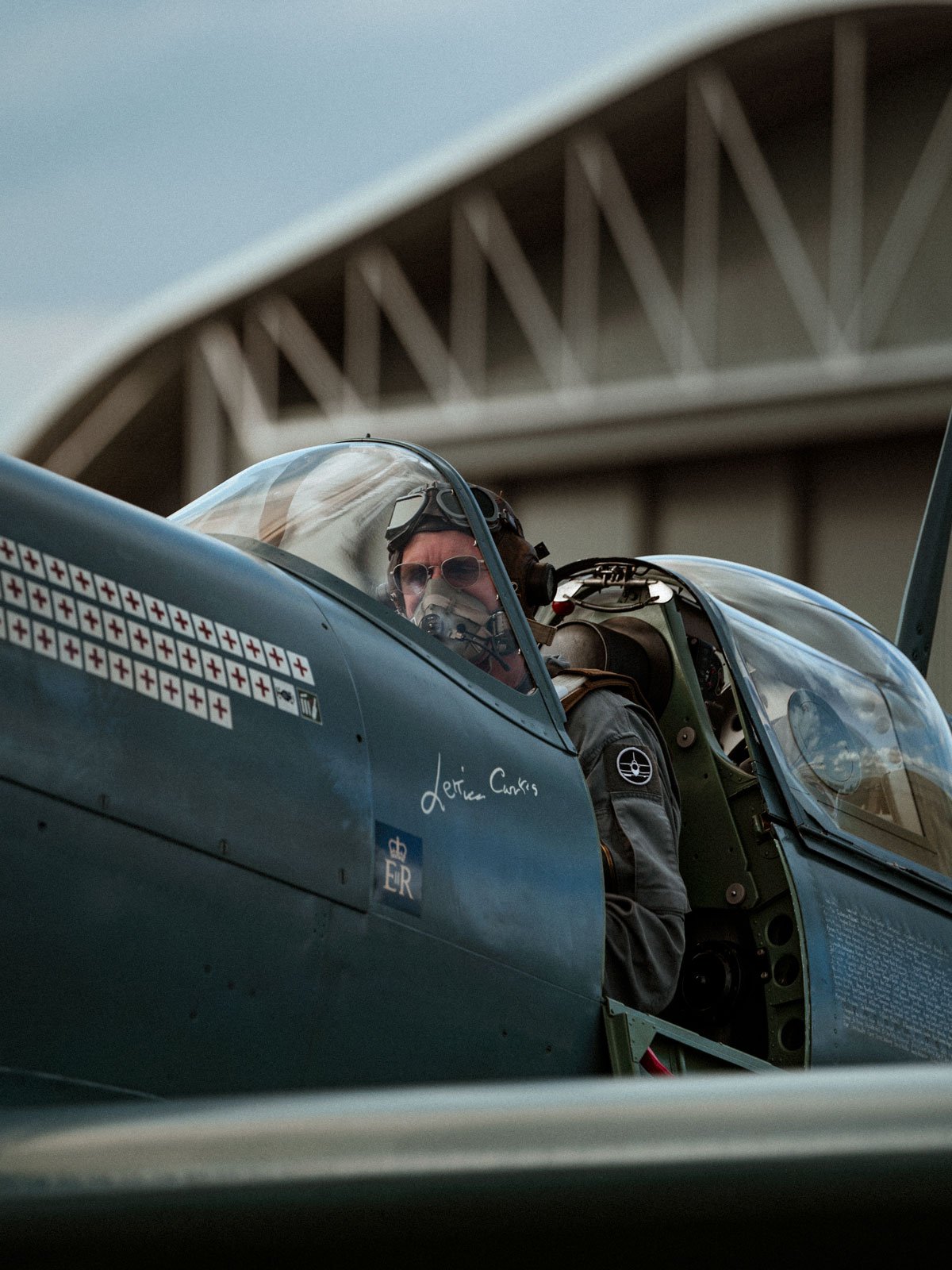SUPERMARINE SPITFIRE XI PL983
Spitfire PL983
Spitfire PR.XI PL983 (G-PRXI) is a rare survivor of this mark of Spitfire, with just two ‘Mark Elevens’ remaining in an airworthy condition. This variant was specially designed to perform high altitude, long distance photographic operations – indeed one of the type’s most famous exploits was taking the initial images following the ‘Dambusters’ raid to prove to what extent the dams had been breached. Armament was removed in place of extra fuel tanks to allow for a significantly increased range. As such, the only defences the ‘Eleven’ had to hand were height and speed. Whilst the PR.XI could avoid most enemy fire at operating height, it was by no means an easy job for the pilots who suffered from the extreme conditions in unpressurised cockpits.
PL983 first flew in October 1944 and saw active service from 1945 onwards, taking photographs across Europe as part of 4 Squadron before transferring to 2 Squadron in Germany following the end of hostilities. The continued introduction of jet aircraft to the RAF saw units gradually replacing their Spitfires which became surplus to requirements and were often scrapped. However this airframe survived and was gifted to the American Air Attaché at the time, Livingstone Satterthwaite, for use as his personal transport. The aircraft still wore its ‘PR Blue’ colour scheme but the roundels were overpainted and the military identity PL983 was removed in place of an American civil registration. Consequently, famous Air Transport Auxiliary pilot Lettice Curtis was invited to fly PL983 in a number of civilian air races. In 1948, Lettice flew the Spitfire in the Lympne International Air Races and broke the National 100km close-circuit record, recording an average speed of 313.07mph.
The aircraft was returned to the Vickers Armstrong factory in late 1950 and was then donated to the Shuttleworth Collection at Old Warden, Bedfordshire. PL983 remained there for the next 25 years - mainly on static display outside - until it was moved to Duxford where a restoration back to flying condition began. Before completion, Shuttleworth sold the aeroplane at auction where it was purchased by French collector and pilot, Roland Frassinet. The Spitfire flew again from East Midlands Airport in 1984 where Trent Aero had completed the rebuild. Three years later the aircraft was acquired by warbird collector Doug Arnold, and soon had a leading role in the TV series ‘Piece of Cake’ where it depicted an early-mark Spitfire deployed to France towards the start of WWII.
Upon Arnold’s death in 1992, G-PRXI – as the airframe was known by now – entered storage until re-emerging in 1999 with a new owner, Justin Fleming.
The Aircraft Restoration Company acquired the airframe some years later and commissioned a full rebuild. At this point it regained the PR.XI ’wrap-around’ Perspex windscreen – removed some years earlier - and the aircraft’s factory original Rolls-Royce Merlin 70 engine was tracked down, overhauled and re-fitted. PL983 flew again in 2018, adorned in the authentic ‘PR blue’ livery which was so effective at camouflaging the aircraft at height. A small addition was Lettice Curtis’s distinctive signature, reproduced in white paint next to the cockpit as a tribute to her and all other ATA pilots active throughout the era. During the restoration PL983 picked up the nickname ‘Eleven’ amongst the team, this over time was affectionately shortened to ‘L’. ‘L’ because it also happened to be the first letter of ‘Lettice Curtis’ and because it’s pronounced ‘el’, as in the first syllable of Eleven. Since then the nickname has stuck and you will rarely hear us refer to this wonderful machine as anything else.
In 2020, G-PRXI was nearing the end of some maintenance work and required a test flight. We decided to schedule John Romain’s test flight to coincide with the ‘Clap for Carers’ initiative which was ongoing amidst the COVID-19 pandemic. He flew the aircraft around local villages in an effort to raise morale during a difficult time for many. Following positive feedback, this was repeated again – this time with the words ‘THANK U NHS’ painted in large white lettering underneath the wings. With word of the ‘NHS Spitfire’ spreading and the NHS themselves now in direct contact to voice their support of the idea, the fuselage began to be adorned with the names of those nominated by their loved ones in return for a donation. The tail feathers of the ‘NHS Spitfire’ were soon a sea of names and the project raised over £130,000 for the ‘NHS Charities Together’. As restrictions eased, John flew this now iconic symbol of hope over some 255 hospitals across England, Scotland, Wales and Northern Ireland to spread the aircraft’s message of thanks to those it represented. Having carried cameras rather than weapons during active service, this non-combat variant of the Spitfire was the perfect machine for the NHS project and we would like to say a heartfelt thank you to everyone who help make it possible.
So… if you are ever passing by Duxford Airfield at dusk, always keep your eyes peeled for a dash of PR blue dancing among the warm evening sky.











